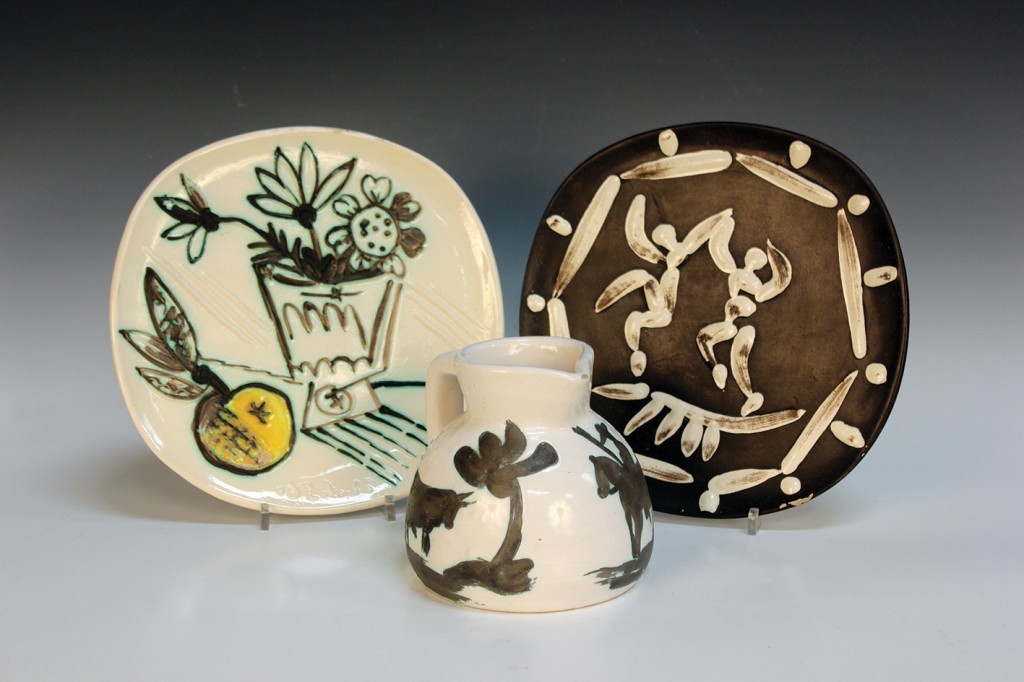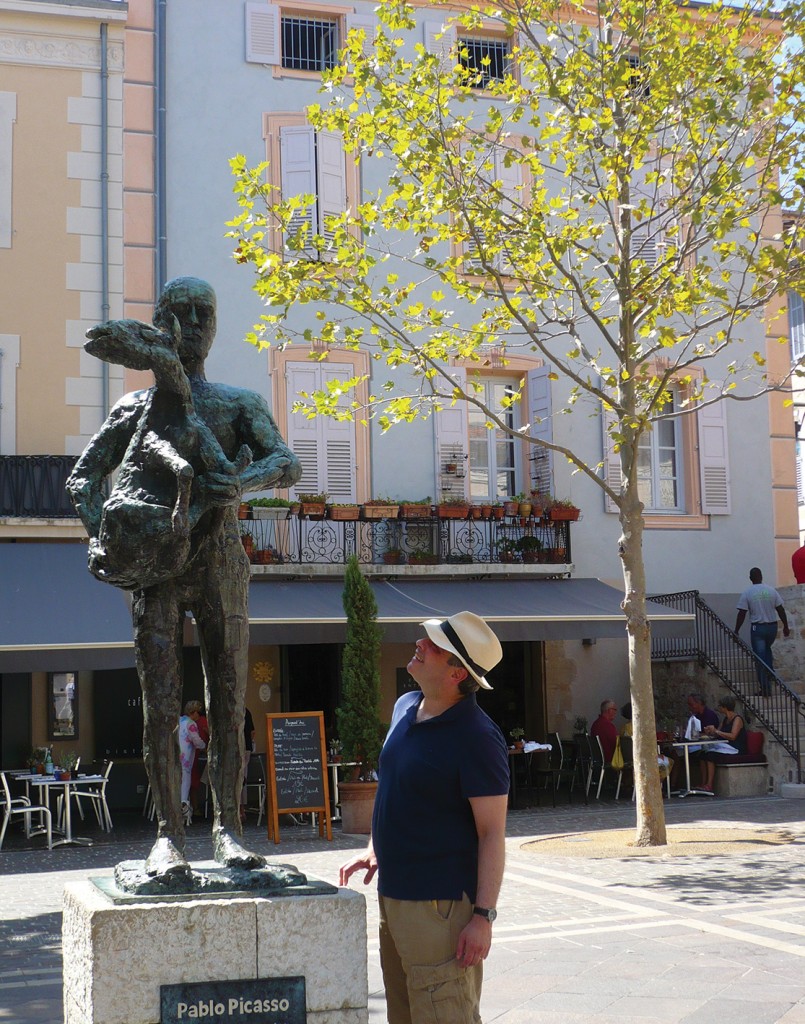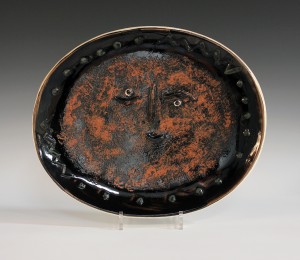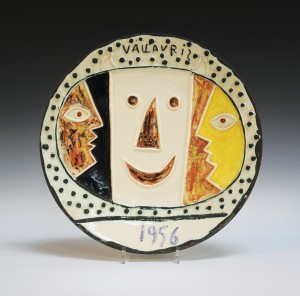
I’m just back from my holidays in the south of France following in the footsteps of Pablo Picasso, who in the summer of 1946, while staying with his friend, the engraver Louis Fort, decided to visit the annual potters’ exhibition in the provincial village of Vallauris in Provence. There he met Suzanne and Georges Ramié, the founders of the Madoura workshop, who were keen to persuade him to come to Vallauris.


Picasso returned in July 1947, bringing his extraordinary imagination and creative energy to ceramics. He was first attracted by the large, almost rectangular dishes in the workshop. Here Picasso took the everyday and transformed it into high art, painting and incising with a richness of expression which still causes my heart to race. Favourite themes included figures, bullfights, still lifes and faces, as depicted on the plates, jug and dish illustrated here. In each you see the free, graphic rhythm which typifies Picasso’s ceramics. These pieces are Picasso Madoura editions. They were made in two ways; the first involved making an authentic replica of an original work by exactly repeating the size and decoration. The second method transferred an original subject, by means of an engraved, hardened plaster mould, to a fresh ceramic sheet, which would be applied in order to take a clay impression. These editions are authenticated by a stamp to the base. Their close connection with Picasso’s hand, like a handmade print, attracts the attention of an international group of collectors. Prices are strong. The dish ‘Face in an Oval’ was produced around 1955, number 74 in an edition of 100. It sold at Toovey’s for £3,400. The plate ‘Two Dancers’, from an edition of 450, and the jug ‘Bull and Picador’, one of 500 copies, were both made in 1956 and would realize around £8,000 and £3,500 respectively at auction today. Picasso’s relationship with Madoura and the Ramiés grew and between 1948 and 1955 Picasso lived at Vallauris before moving to Cannes.

Picasso resurrected the ancient tradition of the all-round artist, exploring painting, sculpture, graphic art, engraving and ceramics. He revived the tradition of the Renaissance artist, many of whom worked in a variety of these disciplines and sometimes even as architects. Picasso delighted in the craft of the ceramicist and quickly began to talk with the Ramiés using the technical language of the potter. The Ramiés, for their part, indulged the often extremely unorthodox practices of the artist, including his forms, his glazes and his methods of firing. Take, as an example, the plate ‘Bunch with Apple’, made in 1956 in an edition of 400; it was decorated with oxidized paraffin. A plate like this would realise around £3,000 at auction today.
The white earthenware ‘Vallauris’ round dish, dated 1956, has an impressed mark and is numbered 42/100. With its marvellous abstract faces, it sold in a Toovey’s specialist sale for £7,400, despite being broken and repaired.
You approach the Musée National Picasso at Vallauris through a square filled with shops and restaurants. Amid the life of the village stands the Picasso bronze ‘L’Homme au Mouton’, given by the artist in 1949. Inside the museum there is a jewel-like array of original ceramics made by Picasso, guarded fiercely by the museum staff. The pieces have a life to them which speaks to my heart with a sense of joy. I have a real feeling of the effect that the light and warmth of Provence had on Picasso after the war years in Paris.
The vitality of Pablo Picasso’s oeuvre has the power to move collectors across continents.
By Revd. Rupert Toovey. Originally published on 10th September 2014 in the West Sussex Gazette.